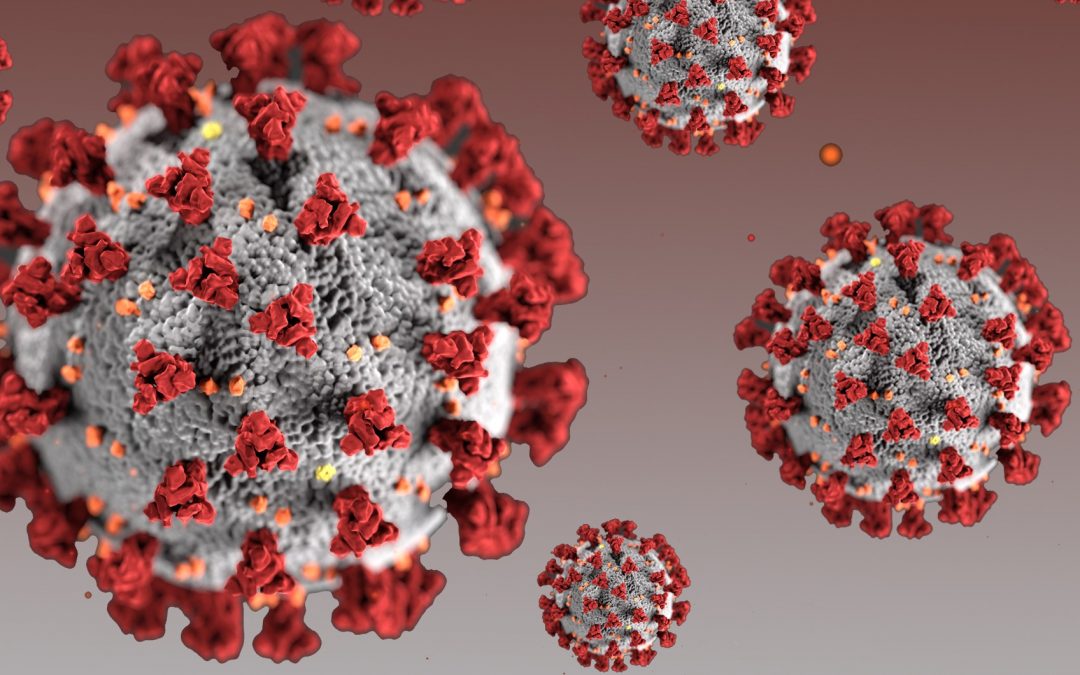A variety of skin lesions have been described with Coronavirus infection, also called COVID-19 or SARS-CoV-2, and this post explores whether there is a link between COVID and wounds. Understanding of this disease is still in the early stages, and it is unclear whether these skin lesions are the result of comorbidities or coinfection with other agents, or whether COVID-19 is actually responsible. A search of the world literature reveals the following skin issues with COVID:
- Acral erythema (redness and swelling of the hands and feet) with vesicles and pustules. This is similar to chilblains – a condition associated with exposure to cold and manifesting in painful inflammation of small blood vessels in the skin.
- Urticarial lesions. This is similar to hives and accompanied by severe itching.
- Maculopapular eruptions. These are flat and raised lesions of the skin.
- Vesicular eruptions. This is characterized by small fluid filled sacs that may be clear, white, yellow, or mixed with blood.
- Livedo-like lesions, sometimes with purpura or necrosis. The term ‘livedo’ refers to a net-like or mottled appearance. Purpura refers to the appearance of a bruise, similar to a Deep Tissue Injury (DTI) pressure injury. This pattern is seen in older patients with more severe disease.
Of these, the livedo lesion with purpura or necrosis is of greatest concern for potential wound development, as biopsies demonstrate microthrombi (small clots) with deposition of complement components. The complement system is a critical part of the immune system and is composed of proteins synthesized in the liver that, when activated, promote inflammation and assist the body in fighting infection. It is suspected that severe COVID infections are associated with a hyperactive or disordered immune response.
Severe COVID-19 infections are usually characterized by acute respiratory failure sometimes requiring ventilatory assistance and often manifesting systemic coagulopathy. Laboratory values include hypoxemia and elevation of d-dimer – a protein byproduct of a dissolving blood clot. It is suspected that microvascular injury and thrombosis could be a central underlying mechanism explaining why some patients develop purpura, and have high morbidity and mortality.
Critically ill patients with hypoxia who are immobilized are at increased risk for pressure injuries. Comorbidities such as diabetes, anemia, malnutrition, and others could add to risk. It is plausible that microvascular thrombosis can initiate or accelerate a pressure injury separate and apart from debility associated with this disease. Severe COVID infection can therefore precipitate a phenomenon known as skin failure, which is defined as the state in which tissue tolerance is so compromised that cells can no longer survive in zones of physiological impairment that include hypoxia, local mechanical stress, impaired delivery of nutrients, and buildup of toxic metabolic byproducts.
There is as yet no consensus among wound care practitioners, but determination of a COVID-related wound would require observation of the evolving lesion with d-dimer measurement and biopsy demonstrating microvascular injury. Determination of a COVID-related wound is an important consideration for risk management and quality measurement, as pressure injuries are often associated with inadequate care. This may not be the case if there is a pathologic process directly contributing to wound development and/or worsening.
So the question remains – is there a COVID-19 related wound? At the time of this publication we do not know for sure. It is possible that microthrombi occurring in the course of the disease might contribute to genesis and/or worsening of wounds that end up classified as pressure injuries. In the absence of wound biopsy, each case must be evaluated with regard to clinical observations, including laboratory parameters and comorbidities, to determine the cause.
* * * * * * * * * * * * * *
References for this post:
Marzano et al. Cutaneous manifestations in patients with COVID-19: a preliminary review of an emerging issue. British Journal of Dermatology 2020; 183(3): 431-442.
Magro et al. Complement associated microvascular injury and thrombosis in the pathogenesis of severe COVID-19 infection: A report of five cases. Translational Research 2020; 06; 220:1-13.
Related posts:
Pressure Injuries Expanded by CMS as Indicators of Hospital Harm
Skin Failure, Unavoidable Pressure Injuries, and Terminal Ulceration at NPIAP
New Review on Aging Skin, with Considerations for Clinicians


Awesome breakdown…thanks. So much to still learn about how the skin is involved here.
This is Mary…we worked together at the wound center when it opened at Beth Israel…hope all is well with you. Stay safe!!